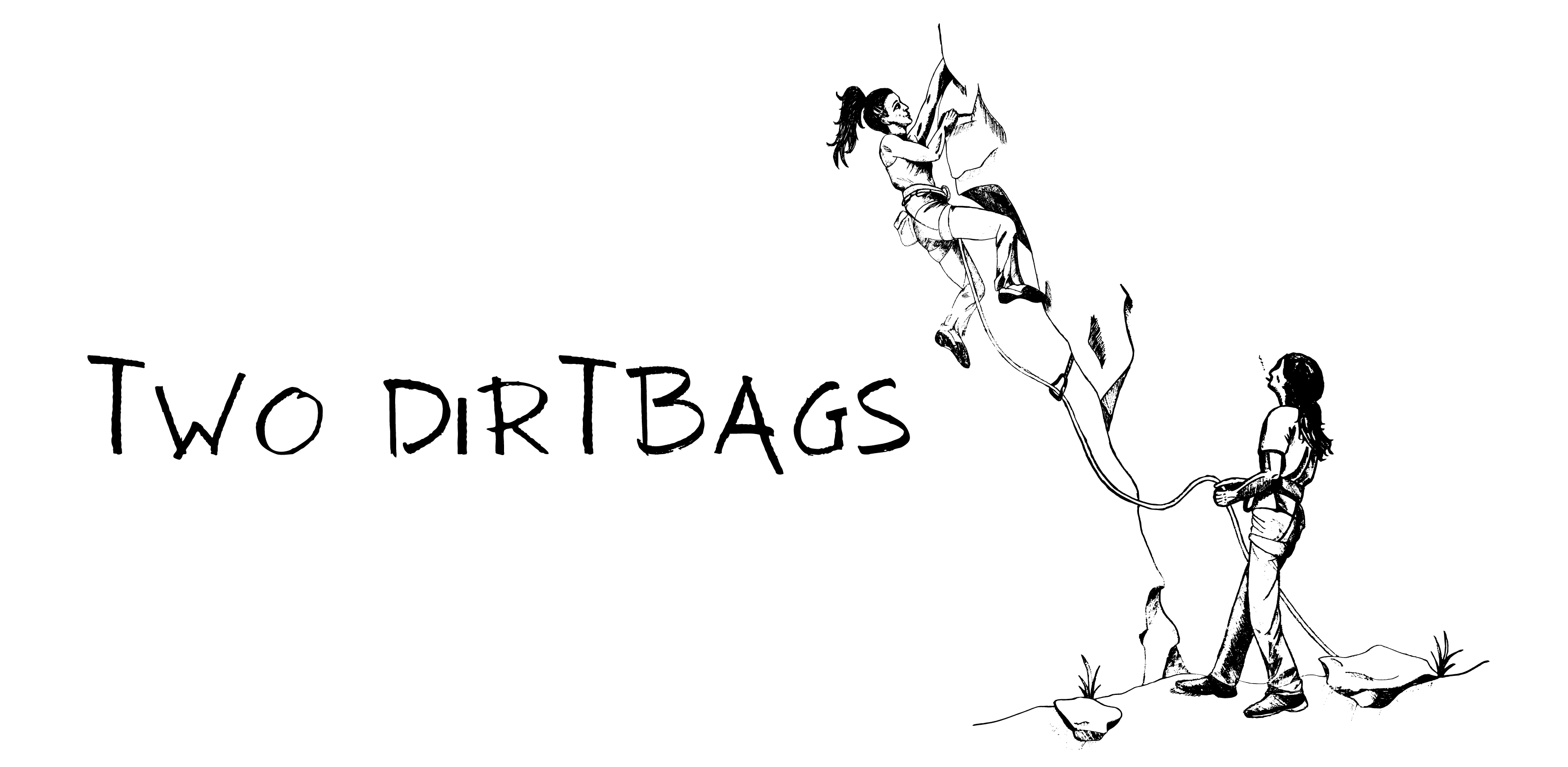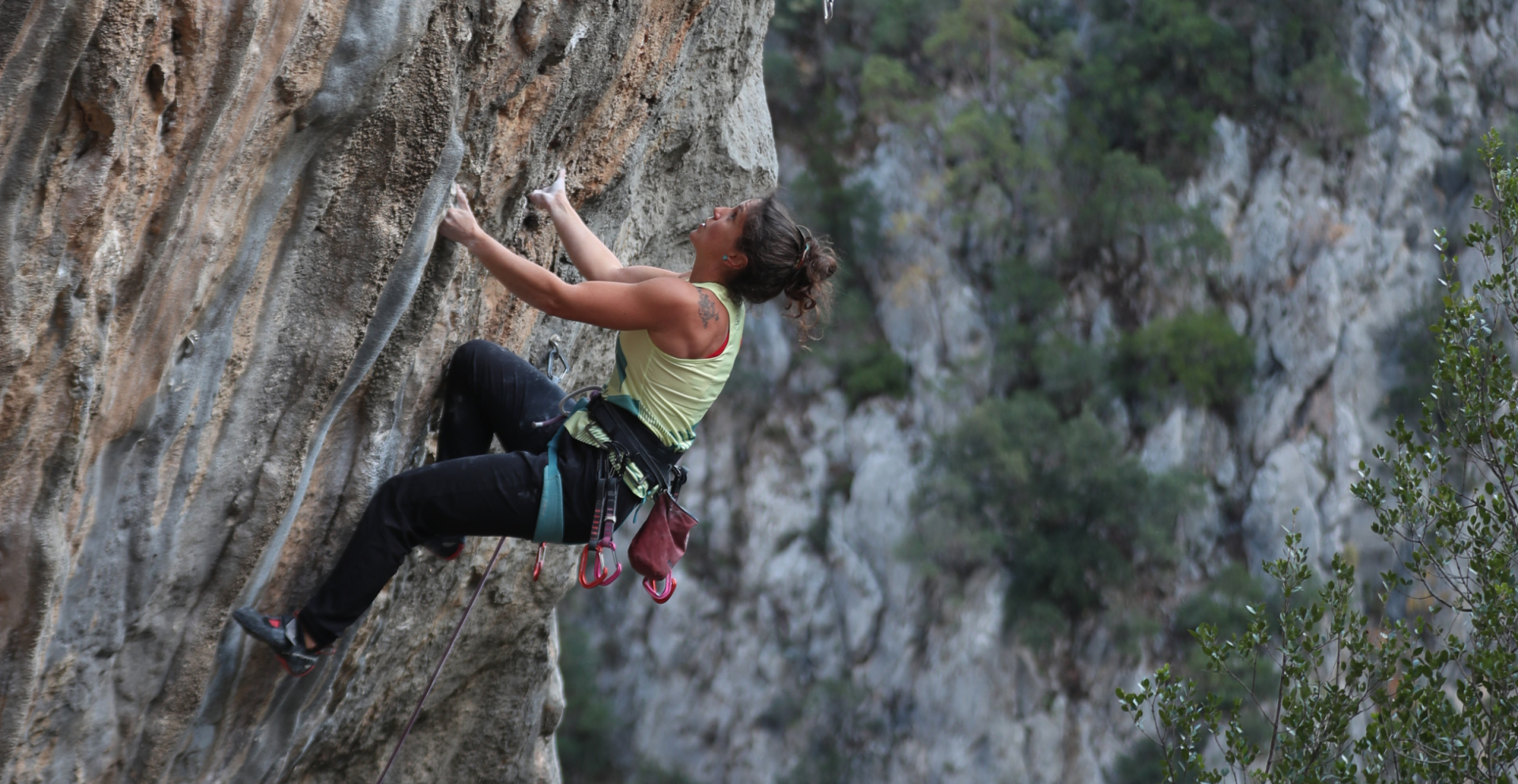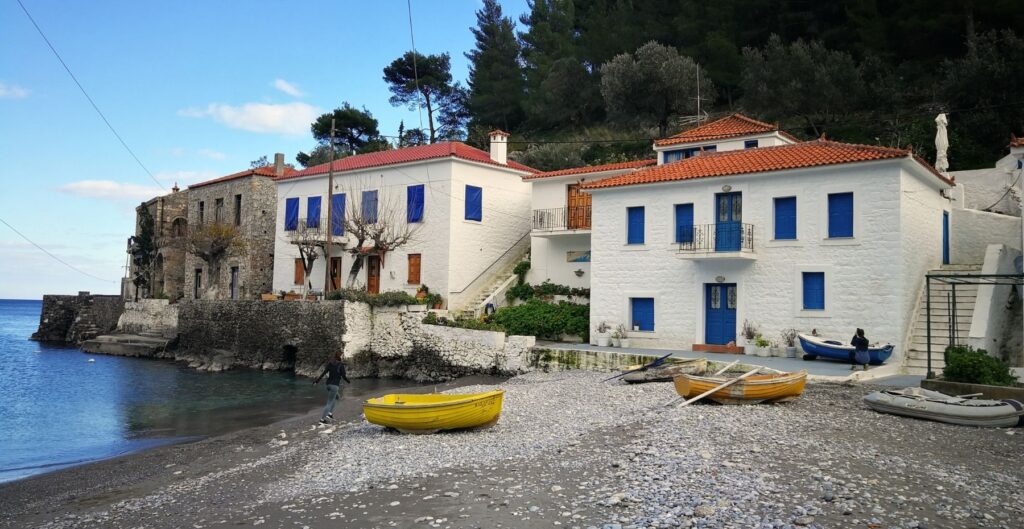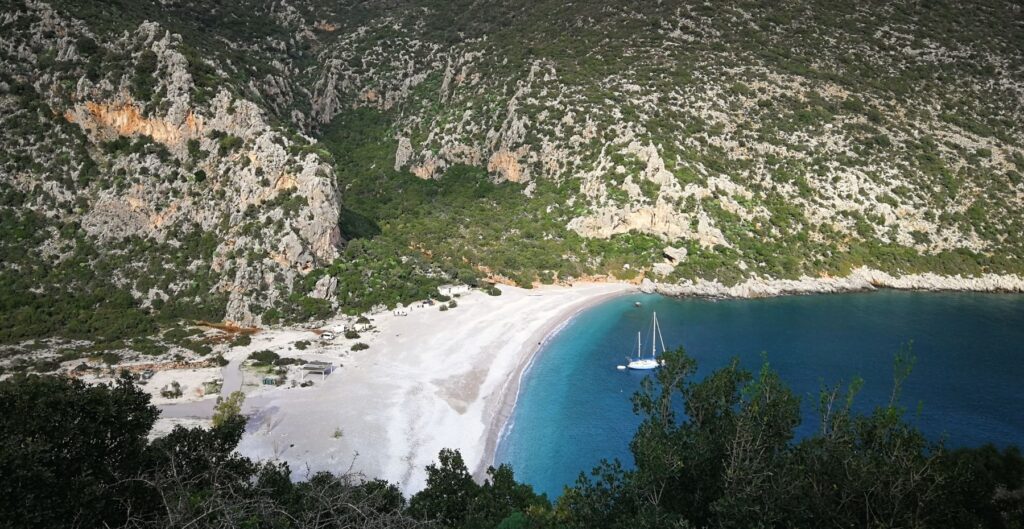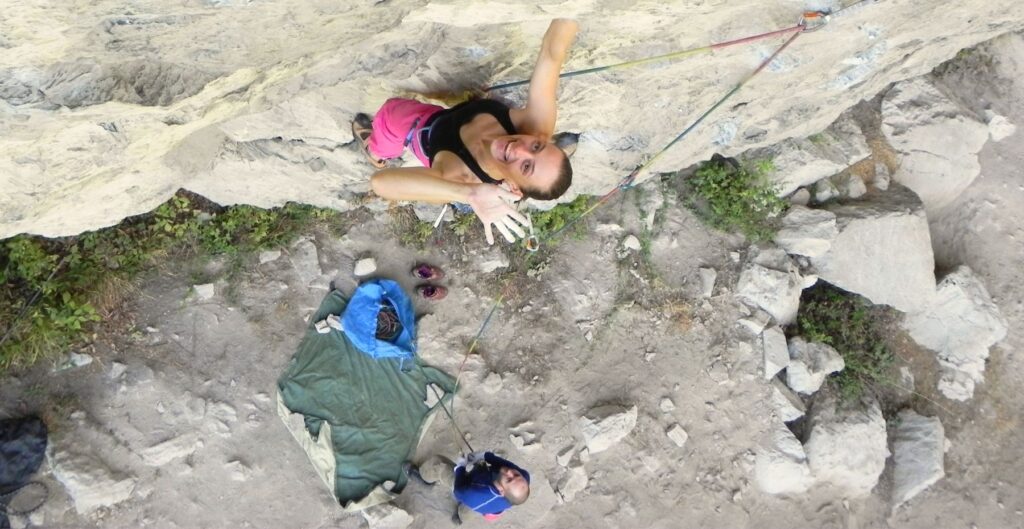
Romania’s biggest and most famous outdoor bouldering destination, Brătilești is so much more than a huge area with scattered sandstone boulders of all shapes and sizes. While that may seem enough (and it is!), it also offers complete and utter freedom; something that’s getting harder and harder to come by these days. The chill vibes, as if time suddenly decided to stop, the authenticity of the land, the nights by the campfire, all of these make bouldering in Brătilești a somewhat transcendental experience.
Romania may not be on top of the list when it comes to outdoor bouldering. Far from it, in fact. That’s not because it lacks bouldering spots or quality, but merely because it hasn’t hit the headlines. There may be some good in that, though; it never gets crowded and the bouldering spots have preserved their wild spirit.
Just picture yourself on top of the Eastern Carpathian Mountains, surrounded by pastures and forests as far as the eye can see. A few villages here are there, boulders that seem to have been thrown around by a giant on green meadows, river beds, inside pine forests, isolated from the rest of the world.
Sounds pretty darn nice, right? It surely is. But you’re probably wondering about the climbing itself and, before you ask, let me say that it’s absolutely worth going bouldering in Romania; in more places than one, actually. But for now I’m going to stick to the star of the show – bouldering in Brătilești. Let’s go!
In this article
What is it that makes bouldering at Brătilești so special?

The bouldering area of Brătilești is located in the heart of the Buzău Mountains, some of the wildest in Romania. These mountains are not tall and rather resemble hills covered with forests and pastures. Mysteries and legends surround them, there are even talks of time/space portals, treasures, and close encounters. What is certain, though, is that there’s something special about this place, something hard to grasp. Perhaps it has something to do with the silence, the seemingly endless pastures, that feeling of having transcended time and space, even if only for a little while.
There may be other bouldering destinations in Romania, each with its own unique features. But when it comes to bouldering in a truly picturesque and serene setting, Brătilești is without rival.
Brătilești is a village in the mountainous area of Buzău County. The bouldering area of Brătilești was named after the namesake village because the first boulders discovered here sit right above it, in the “La Corturi” (“Tents”) sector.
Bouldering in Brătilești is sort of a package deal. Not only do you get to climb on beautiful boulders, but you can also camp, sit by the campfire, make a barbecue, and just be, all in the middle of nature and far from any distractions. It’s a place to bring your family, kids, and friends (even if they don’t climb).

Onto the climbing itself, what makes Brătilești particularly appealing is the fact that it has boulder problems for all levels. There are lines from 5A to 8B, some open projects, too. The bulk of the routes are in the 6A to 7A+ range, making this a great place to climb for fun, improve, and get some mileage.
On the one hand, there are many beginner-friendly boulders. If you’ve never been bouldering outside before, you’ll find some easy lines to help you get into the groove.
On the other hand, there are many challenging and spicy lines. The hardest (so far) is L’intégrale du Decadance 8B, a traverse on a very aesthetic boulder tucked away in the forest at Mount Ivăneţu sector. Enola Gay, at La Corturi sector, is perhaps the most recognizable boulder problem at Brătilești, a 7C stand and 8A sit. It’s also among the first lines in the area.

Slabs and slopers prevail, often with tricky mantles at the top-outs that will test your footwork, overall technique, and creativity. There are some vertical and some slightly overhanging boulders, some cracks, crimpy lines, too.
Read more >> Climbing in Romania: All You Need to Know
Getting to Brătilești

Image credit: Robert Rusen
You absolutely need a car to get here. Brătilești is approximately 170 km from Bucharest, 110 km from Brașov, and 62 km from Buzău. There’s no public transport to the villages around the bouldering area.
Wherever it is you’re coming from, you need to get on National Road 10 (DN 10) that connects Buzău to Brașov. From there, you have several options. Coming from Bucharest and Buzău, turn right at Berca and go through Gura Văii-Odăile-Brăești-Brătilești. Some sections of the road have been recently asphalted, but there are portions of gravel road, too.
Coming from Brașov, the quickest way is through Nehoiu and Gura Teghii. Before entering Gura Teghii, turn right, leave the asphalt road, and drive on a gravel road for about 14 km.
Heavy rainfall or snowfall can make certain sections of these roads quite difficult.
Best time to climb in Brătilești

Autumn is generally considered the best time to go bouldering in Brătilești. This is because autumn tends to have more stable weather, cooler temps, and a drier atmosphere. Obviously, when it comes to friction on fine sandstone, dry weather is the best.
Although the boulders are pretty good quality, this particular fine sandstone is a bit soft. Therefore, please be wary of the humidity – don’t climb on humid rock or brush it when it’s damp because it might deteriorate.

Image credit: Cristi Cocuz
Because there are so many bouldering sectors, some of them at an elevation of 1,000 meters and in the forest (e.g. Mount Ivăneţu sector), it’s possible to climb in summer as well. At the same time, the boulders closer to the village of Brătilești are located at about 700 meters altitude and get a lot of sun (e.g. La Corturi sector), making it possible to climb there during sunny winter days. So, all in all, it’s possible to go bouldering in Brătilești almost all year round.
Bouldering sectors in Brătilești

The place may get its name from the village of Brătilești, but this bouldering destination covers a remarkably large area. There are several main sectors and new boulders are being discovered as we speak. The area just keeps on growing! And of course, anyone is more than welcome to explore and open new lines.
Back to the existing boulders and lines that all new-comers wish to see, here they are, the main bouldering sectors at Brătilești:
La Corturi

One of the biggest bouldering sectors at Brătilești, La Corturi is home to the very first boulders discovered in the area. It’s also on top of the list for those who come here for the first time.
La Corturi (“Tents”) sits next to the village of Brătilești and has several boulders in a large meadow surrounded by pine trees. There’s a very popular and picturesque camping place here, next to a boulder called Grătărist (“Barbecue Man”) that offers an interesting playground just a few steps from your tent/campfire. Wild camping (aka free of charge, no amenities, in the middle of nature), is allowed in the area; so are campfires.
This is where you’ll find Enola Gay 7C (stand)/8A (sit), one of the most aesthetic boulder lines in the whole Brătilești area, as well as Ipoteza de Nul 7C+. There are many boulder problems for beginners, too, starting at 5A, plus some tricky slabs.
To get to La Corturi sector, park here and follow the path in between the garden fences. Go slightly down, cross the stream, and you should reach the boulder with Enola Gay. From there, follow the path through the meadow. You should see boulders to the left and right, as well as some hidden ones a bit further up in the forest. The camping place at Grătărist boulder is on the opposite end of the meadow.
La Fraţi
Opposite of La Corturi sector, you’ll find La Fraţi (“Brothers”) sector.
Park your car in the same place as you would for the La Corturi sector, but go in the opposite direction, slightly down towards the valley underneath the main road. There is a visible dirt road that goes down towards a small stream. From there, go up towards the ridge where you’ll find the first boulders. There are several other boulders in the forest, on the ridge and underneath it, with some classic, aesthetic lines.
Nautilius
There are only three boulders here. Located above Brătilești, on the opposite slope of the valley from La Corturi, this sector gets its name from one of the most spectacular boulder lines in the area, Nautilius 7B+. Park here and follow a dirt road uphill through the forest until you reach the boulders.
Mount Ivăneţu

This sector is one of the most famous and most remote in the area. As soon as you get here, after a 20-30 minute hike from the main road, it’ll feel as if you’ve reached the edge of the world. You’ll climb (maybe even camp) with incredible views of the Buzău Mountains and their mystical skyline.
The place gets its name from Ivăneţu Peak and has one of the highest densities of cool boulder problems in the Brătilești area. Mount Ivăneţu is where you’ll find the hardest boulder problem in Brătilești, L’intégrale du Decadance 8B, as well as a good number of very aesthetic lines for all levels.
To get to Mount Ivăneţu sector, park here. With your back to the valley and facing the hill, you’ll see a dirt road that goes up to the left. It takes about 20 minutes to get to the sector on foot, a bit more with crash pads and camping gear. It’s also possible to get to the boulders with a 4×4.
The boulders at Mount Ivăneţu are located in the upper part of the meadow, under the forest line, as well as in the forest, to the right as you look towards Ivăneţu Peak. Most of the boulders have soft landings and are also child-friendly.
You can camp either in the large, open meadow on the left (here) or in the smaller one above it, on the right (here).
Mount Ivăneţu sector has the highest elevation in the area, over 1,000 meters. Thanks to this, it’s possible to climb here even on cooler summer days. In late autumn and in winter, it’s often too cold to climb here.
La Cascadă
La Cascadă (“The Waterfall”) gets its name after Săritoarea Waterfall, a lesser-known attraction in the area. Most of the boulders are on the upper side of the waterfall, but there are a couple on its lower side, too (those are easier to reach coming up from Brătilești).
To get to the main boulders at La Cascadă sector, park here close to Plaiu Nucului and follow the dirt road slightly downhill until you reach the first boulders on the ridge. The next boulders are a bit further down, to the right, and are visible from the path.
In total, there are about a dozen boulders and several problems here. The most aesthetic boulders in this sector are the ones further down from the road and to the right, the likes of Eye of the Tiger and Troglodyte.
Faţa Malului

Image credit: Cristi Cocuz
Faţa Malului gets its name after the namesake village and is the northernmost boulder sector at Brătilești.
The upper part of this sector is located on a large pasture, quite scenic and welcoming. Thanks to this, the boulders in this part have soft landings and are child friendly, too. In the lower part, towards the valley and stream, there are a few spectacular boulders with not-so-friendly landings. Multiple crashpads and spotters are highly recommended here.
There are at least a dozen boulders in this sector. You’ll also find a couple of boulders right above the main road, close to the parking space.
You can either park here, on the side of the road, and then continue on foot on the dirt road downhill to the right. Or you can drive a bit on the dirt road and park close to the first boulders here. From the first boulders, just follow the dirt road downhill and you’ll see more boulders to the right and left. If you continue, you’ll reach the last boulders down in the valley, on the river bed.
Portage

Image credit: Cristi Cocuz
Portage is the westernmost boulder sector at Brătilești. Although a relatively smaller climbing sector, Portage is quite a versatile playground. What’s more, it gets a lot of sun, making it possible to climb here in lower temps.
To get to Portage sector, park here. You’ll see an electricity pole on the side of the street. Looking at the pole, with your back to the road, go right towards the edge of the forest and you should see a path straight up through the forest. It’s a 10-minute hike uphill to the boulders.
Lopătari

Image credit: Robert Rusen
The easternmost bouldering sector at Brătilești (so far), Lopătari is a bit farther from the other sectors and was recently developed during the 2023 Brătilești Boulder Festival. Coming from Plaiu Nucului, the boulders are to the right of the road before reaching the village of Lopătari. There are two sub-sectors here – uphill from the Lopătari dam and downhill from the dam, in a canyon on the riverbed.
Park here and go towards the riverbed. Go downstream and you should see boulders on both sides of the river. You can also park closer to the Lopătari dam to access the boulder below the dam.
There are other bouldering areas relatively close to Brătilești that are worth visiting as well, such as Varlaam, Bisoca, and Cireșu.
Where to stay?

Those who are already familiar with climbing in Brătilești know that coming here implies sleeping in a tent or a van because there are hardly any accommodation options. You have the added bonus of building a campfire and making a barbecue in some peaceful meadows, too. So yeah, Brătilești is a damn good place for us dirtbags.
There are only a handful of guesthouses in the area, unfortunately not as close to the boulders as you’d like, so you need to plan wisely if you opt for accommodation.
The most popular camping places at Brătilești are at the La Corturi (“Tents”) and Mount Ivăneţu sectors.

La Corturi is often preferred because it’s easier to get to. It takes 5-10 minutes to get from the car to the camping place near the Grătărist boulder (exact location here). Campfires are allowed here. Even though you’re right above the village, somehow it still feels like you’re in the wild.
Mount Ivăneţu is even more spectacular because it’s quite isolated. This bouldering area is located under Ivăneţu Peak, and the camping area is in a beautiful meadow surrounded by pine forests. This all comes at a price, though; it takes 20-30 minutes to get from the car to this place. That is, unless you have a reliable 4×4. You can build a campfire here, too.
Getting around

The newly released printed guidebook, the Brătilești Bouldering Topo, is now available for sale at some climbing gyms in Romania – NaturalHigh in Braşov and Bucharest, Blokx and Fabrica de Cățărat in Bucharest, and at Skai in Cluj-Napoca. You can also find free info on the boulders in this PDF, albeit not updated and in Romanian.
Even though there are a few villages, it almost feels like you’re in the middle of nowhere. There are no climbing/outdoor shops in the area. You’ll find a couple of small shops where you can get some basic provisions, but they’re rather limited. So, I suggest stocking up before you get here.
If you don’t have or cannot bring your own crash pads, the good news is that it’s now possible to rent them out in Brătilești. A climber based in the village of Plaiu Nucului offers crash pad rental, bouldering courses, and bike rental.

Two crash pads should be enough for the majority of the boulder problems at Brătilești. Most of the landings are pretty soft. But there are some taller boulders and landings that are not as friendly, so make sure you have enough crash pads and enough spotters when you go there.
Each year, at the beginning of October, Brătilești Bouldering Festival joins together climbers from all around the country. This is a very chill climbing festival with simple goals – reunite with friends, meet people, climb existing boulders, and open cool new lines.
For more pics, info, and updates on the area, you can go to the Brătilești Bouldering Romania Facebook page and on the Brătilești Bouldering România Instagram page.
What else can you do in Brătilești?

This part of Romania is not touristy at all, although it sure has a lot going for it. Of course, for those looking for some solitude and time well-spent in nature without the crowds, that can only be good news.
Whether you’d like to take a rest day or are traveling with non-climbing family/friends, there’s plenty to do and see in the mellow mountains around Brătilești. A car is good for these day-trips, but a bike also works.
Brătilești sits in the heart of the Buzău Mountains, in a place that’s locally referred to as Ţara Luanei (“Luana’s Country”), named after a mythical king. Indeed, this land has many hidden treasures. Take for example the mystical cave dwellings at Bozioru, Nucu, and Aluniș – about 30 caves, grottos, and sanctums that have been used as refuge and hermitages since pre-Christian times.
The Amber Museum at Colţi houses impressive collections of fossils dating back 40 million years. The area is famous for its unique reddish amber called “rumanite”, as well as its dark amber that is extremely rare on the planet.
Then you have the rock spheres (concretions) at Bozioru, in the village of Ulmet. If you have a bit of time, visit the eternal flames near Terca, located pretty much in the middle of wilderness because the road is not so great and it’s a 30-minute hike to the flames on top of that (location here).
Near Mânzăleşti, the Meledic plateau has outstanding salt formations (caves, ravines, outcrops, domes, lakes), the longest salt cave in Europe (6s Salt Cave), and mounds of petrified volcanic ashes. And of course, I must mention the very popular and already touristy muddy volcanoes at Berca.
All of these gems are within the “Ţara Buzăului” UNESCO Geopark, which protects the geodiversity, biodiversity, and cultural diversity of this unique land.
